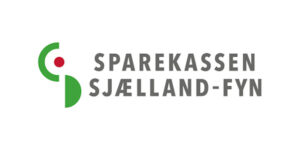Fra Fathom Consulting
Our own measure of economic activity in China, our China Momentum Indicator, has climbed from a record low of 2.2% in January last year to 3.1% in December. This was driven by a recovery in the indicators most closely linked to China’s tried-and-tested growth model of credit-fuelled investment and exports. With the National Congress of the Chinese Communist Party in August, we expect the attainment of official growth targets to remain China’s priority.
Refresh the chart in your browser | Edit chart in Datastream
In May last year, an unnamed Chinese official was quoted in the People’s Daily — the Communist Party’s main mouthpiece — as saying that “the country should make deleveraging a priority, and the ‘fantasy’ of stimulating the economy through monetary easing should be dropped.” However, in line with our central scenario at that time, China’s policymakers did quite the opposite — reverting to the old growth model of credit-fuelled investment in a desperate bid to kick-start the economy.
Reflecting this, our own measure of China’s economic activity — our China Momentum Indicator (CMI) — climbed from a record low of 2.2% in January last year to 3.1% in December. Our CMI combines three indicators identified by Premier Li Keqiang as providing a better gauge of economic activity than the official estimate of GDP: rail freight volumes, electricity production and nominal bank lending. The first two, which are most closely linked to China’s tried-and-tested growth model, were largely responsible for the turnaround in our CMI last year.
Refresh the chart in your browser | Edit chart in Datastream
Unfortunately, due to Chinese New Year celebrations and limited data availability, we are unable to update our CMI for January. However, data for the final component of our CMI, nominal bank lending, is available. In January, it reached its second highest level on record. And although not captured by our CMI, at RMB 1.2 trillion, net off-balance sheet lending also surged, hitting its highest level in fourteen years of recorded data.
Admittedly, there is often a surge in lending in the run up to the Chinese Lunar New Year, with renewed lending quotas supporting increased loan demand. To ease temporary liquidity shortages, the PBoC also tends to inject funds via open-market operations (OMOs). Last month, the net amount of funds channelled through OMOs hit a record high. In addition, the PBoC introduced a month-long ‘temporary liquidity facility’ for several major commercial banks.
Refresh the chart in your browser | Edit chart in Datastream
Refresh the chart in your browser | Edit chart in Datastream
However, this year, the PBoC quickly reverted to tightening the flow of credit. Within the space of a week, three Chinese lending rates were raised by 10 basis points: the seven-day reverse repo rate[1]; the Medium Lending Facility (MLF) rate; and the Standing Lending Facility (SLF) rate[2]. In addition, the PBoC refrained from issuing any reverse repurchase agreements for five consecutive days, twice. This marked an unprecedented halt in issuance since the daily participation in this market began in February last year.
Refresh the chart in your browser | Edit chart in Datastream
In our view, these events merely mark the latest twist in the Chinese government’s love-hate relationship with credit. In response to the global financial crisis, China’s authorities opened the credit spigots and fuelled an investment splurge so large that economic growth slowed only momentarily. Much of that credit was poorly allocated, flowing toward unprofitable projects and unproductive assets such as real estate.
Before long, the price of a property in a tier-one city had climbed to around 20 times the average annual salary and China’s policymakers were forced to curb bank lending and tighten interest rates. What ensued was a rapid expansion in unofficial channels of credit growth, exacerbating policymakers’ thorny relationship with credit. Further attempts to cool credit growth derailed the economy, with our CMI slowing markedly from end-2013.
Struggling to restore economic growth, the authorities have since thrown in the towel on rebalancing and ‘doubled down’ by pursuing the old growth model of credit-fuelled investment and net trade. But conscious of bubble-like conditions, China’s policymakers have repeatedly intervened, either acting to cool the market or reinvigorate it. This is particularly true of the housing market. The minimum down-payment for homebuyers, used to influence demand for properties, has been repeatedly altered in order to maintain an acceptable pace of house price inflation in the eyes of the Chinese authorities.
Refresh the chart in your browser | Edit chart in Datastream
In conclusion, although difficult to interpret, particularly around New Year, recent policy developments hint at a new chapter in the Chinese government’s relationship with credit. But with government officials under immense pressure ahead of the 19th National Congress of the Chinese Communist Party this autumn, we expect the attainment of official growth targets to remain priority. As a consequence, rather than switching to a long-run sustainable growth strategy, we expect China’s policymakers to continue to kick the can down the road.













